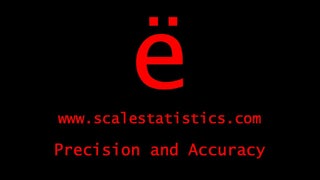Standard deviation
Standard deviation gives a relative context for interpreting how far observations are away from the mean
Standard deviation is an important measure of variability associated with continuous distributions. Standard deviation is calculated by taking the square root of the variance in a distribution. Standard deviations allow for better understanding of how far observations are away from the mean and how much overall variability exists in a distribution. Standard deviations also allow for the interpretation of individual observations in terms of their relationship to the mean.
The steps for calculating standard deviation in SPSS
1. The continuous data is entered into a column of a database.
2. Click Analyze.
3. Drag the cursor over the Descriptive Statistics drop-down menu.
4. Click on Descriptives.
5. Click on the continuous variable to highlight it.
6. Click on the arrow to move the outcome variable into the Variable(s): box.
7. Click OK.
2. Click Analyze.
3. Drag the cursor over the Descriptive Statistics drop-down menu.
4. Click on Descriptives.
5. Click on the continuous variable to highlight it.
6. Click on the arrow to move the outcome variable into the Variable(s): box.
7. Click OK.
The steps for interpreting the standard deviation output in SPSS
1. In the Group Statistics table, look under the Std. Deviation column. This is the standard deviation value that is interpreted.
Click on a button below to continue.
Hire A Statistician
DO YOU NEED TO HIRE A STATISTICIAN?
Eric Heidel, Ph.D., PStat will provide you with statistical consultation services for your research project at $100/hour. Secure checkout is available with Stripe, Venmo, Zelle, or PayPal.
- Statistical Analysis on any kind of project
- Dissertation and Thesis Projects
- DNP Capstone Projects
- Clinical Trials
- Analysis of Survey Data
